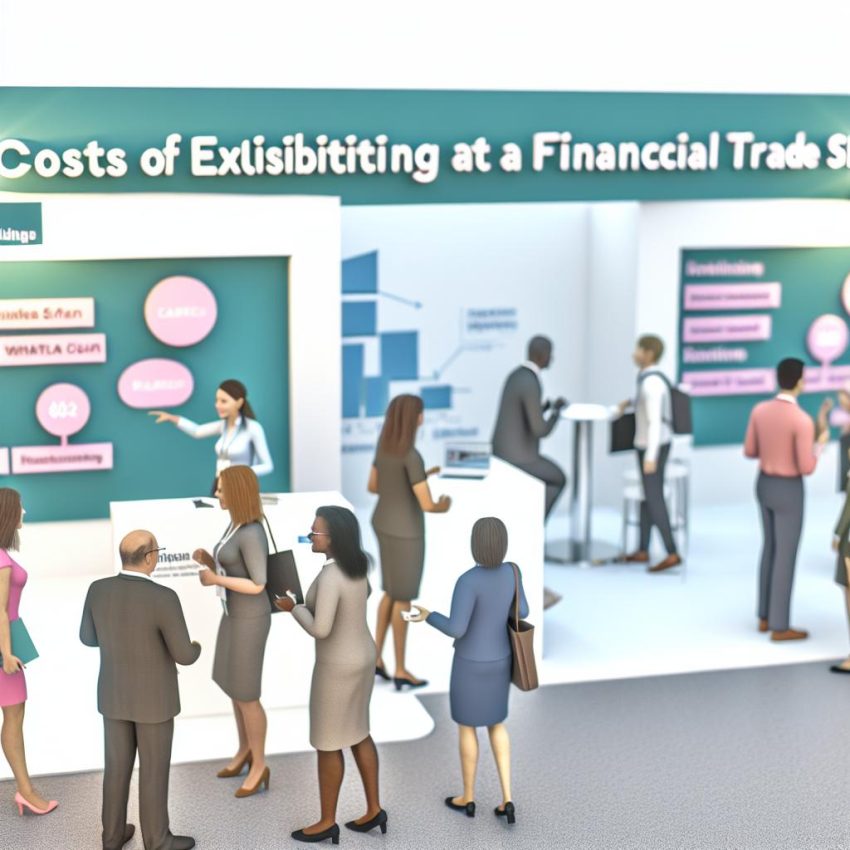The Costs of Exhibiting at a Financial Trade Show
Participating as an exhibitor at a financial trade show can be a strategic move to gain exposure, connect with potential clients, and develop significant business deals. However, it is not without its financial demands. Understanding and anticipating these costs are essential to ensure that the investment yields positive returns.
Booth Space and Design
The decision to exhibit at a financial trade show begins with securing booth space, often the largest expenditure of the entire venture. The cost of securing a booth varies significantly depending on factors such as the size of the booth space, the market reputation of the trade show, and its location. In prestigious or high-profile events such as international financial expos, a standard booth can easily cost thousands of dollars.
Beyond just securing the booth space, how the booth is designed and constructed can further add to the expenses. Exhibitors must allocate funds for designing and building a booth that not only reflects their brand but also attracts attention amidst a sea of other exhibitors. Design complexity and choice of materials play pivotal roles in this. A simple, unfussy setup might offer cost efficiency, saving both time and money, whereas a custom-designed display can rapidly accumulate costs. High-quality materials, intricate designs, and professional installment services add to the financial burden, yet they might offer an advantage in attracting more visitors.
Marketing and Promotional Materials
Effective marketing at trade shows extends beyond what is visually appealing at the booth itself. It necessitates a diversified range of promotional materials designed to attract and captivate the interest of attendees. This typically includes printed materials like brochures, business cards, and flyers that offer information about the company. Further, branded merchandise such as pens, notebooks, and tote bags serve as tangible reminders that attendees can take home.
Digital displays, such as videos and presentations, can also enhance the interactive experience of the booth, providing engaging content that captures the attention of passersby.
Another consideration is pre-show marketing, which can involve efforts such as email campaigns, social media announcements, and advertising. These activities aim to generate buzz and draw attendees specifically to your booth at the event.
Creating and distributing effective promotional materials requires both an understanding of marketing and a willingness to invest financially in sophisticated and appealing assets.
Staffing and Logistics
An often underestimated cost of exhibiting is the staffing requirement. Choosing to have staff on-hand at the booth ensures that your business can engage directly with attendees, answer inquiries promptly, and facilitate networking opportunities. Costs will be incurred for travel to and from the event, accommodation, daily meals, and potentially additional compensation such as salaries or stipends for employees participating in the event.
Logistics, while sometimes considered an offshoot of staffing, encompass a wide range of responsibilities. This includes the shipping and handling of booth materials and promotional items to and from the trade show venue. Proper logistics planning helps in avoiding last-minute rushes and unforeseen expenses. Ensuring efficient movement of resources and items is critical, and it’s another area where costs can escalate if not managed wisely.
Travel and Accommodation
Travel and accommodation are variables that fluctuate considerably depending on the location of the trade show. Local events incur fewer expenses, as there may be no need for flights or prolonged stays. However, participating in international or distant trade shows could mean extensive budgeting for airline tickets, visa arrangements, hotel accommodations, and transport within the host city.
The key to managing these costs is early planning and booking. Often, securing flights and hotels well ahead of time can yield significant savings, while also ensuring availability during peak periods, which are typical around large-scale trade shows.
How to Budget Effectively
Efficiency in budgeting defines the sustainability of participating in trade shows. To initiate this process, businesses should estimate potential expenses across all significant categories. Utilizing past experience of trade shows and consulting with industry peers can provide a more realistic view of potential costs, allowing for better preparation.
It is prudent to allow a financial buffer—typically 10-20%—for unforeseen costs that may arise during the event. This ensures that any surprises can be smoothly managed without jeopardizing the overall financial plan.
Constructing a detailed and comprehensive budget allows businesses to visualize their spending and make intelligent decisions regarding where they can economize or if they need to adjust their strategies for greater efficiency.
Conclusion
In conclusion, exhibiting at a financial trade show involves multiple layers of costs, spanning from booth space and design to marketing, staffing, logistics, and travel. Each element requires thoughtful planning and allocation of resources to ensure the event participation is successful and beneficial.
By developing a well-considered budget and understanding the various cost components, exhibitors can make informed decisions and strategically approach trade show opportunities. Ultimately, with good planning and execution, the initial financial commitment can lead to increased visibility, new business relationships, and substantial returns in the financial industry.
This article was last updated on: July 20, 2025
